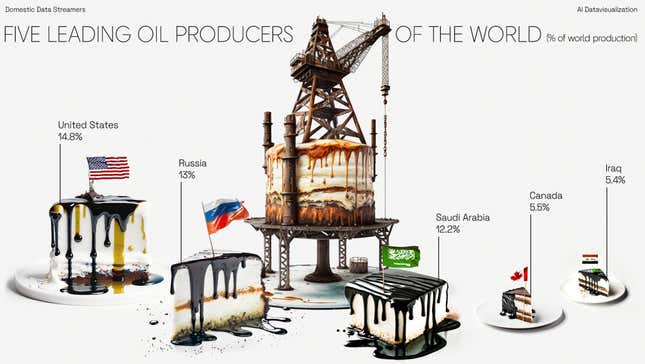
Designer Pau Garcia has been tinkering with artificial intelligence for the past several years. An early user of OpenAI, a startup that popularized generative AI, he said he was initially intrigued by AI, yet didn’t expect it to play much of a role in his world.
“I was always told that the creative industry will be the last to be overcome by robots,” said Garcia, who co-founded the Barcelona design firm Domestic Data Streamers in 2003. “But at the same time, I was really curious.”
Then, perusing the web one day, he came across a script of an episode for the show Rick and Morty that had been written by OpenAI’s large language models. That moment changed everything. “At that point, I said, ‘Ok, this is very close to what I’m doing,’” he said. That sparked his journey into designing with AI generative tools like ChatGPT and DALL-E .
Garcia was ahead of the curve. Domestic Data Streamers is just one of many companies that has been engaging with generative AI—the term for technology that generates new content like text, visuals, code. Behind these more advanced versions of AI are startups like OpenAI and Stability AI, the latter of which makes the generative AI tool Stable Diffusion, as well as larger tech firms like Microsoft and Google.
Domestic Data Streamers provides creative services to clients that include the World Bank and the United Nations, charging between 70,000 euros ($74,890) and 250,000 euros ($263,890) per project. In the past year, the firm has been using generative AI in work for clients ranging from a European news outlet to a prison in Italy.
So, how does the company use AI?
Experimenting with ChatGPT and DALL-E
Over a Google Meets chat, Garcia pulled up an Excel spreadsheet displaying summaries of different projects. To jumpstart the brainstorming process on proposals from clients, Garcia can enter keywords—“climate change” or “sports,” for instance—into a Google Docs form. From there, the functions he built on ChatGPT spit out quotes from experts on the given topics into the spreadsheet.
Research for a project usually takes about two weeks, but ChatGPT can cut that time frame in half, said Garcia. Over the past six months, he has been educating his more than two dozen employees on how they can experiment and use ChatGPT and DALL-E in their methodologies.
While Garcia is quick to admit he is an optimist, he understands why a pessimistic person might see generative AI in action and assume they’re about to be out of a job. But he says that the data it generates needs to be fact-checked, something that he’s sure to remind his employees of often.
“It’s irresponsible to use this technology without understanding that it tends to hallucinate and lie,” he says. He adds that his firm has also implemented self-made Chrome integrations that find the source of the material on the Internet.

AI tools will change how we work
Recently, Garcia chatted with the football club FC Barcelona, which was curious about using AI to create an advertisement. But when Garcia explained how the language models behind generative AI tools like ChatGPT and DALL-E are trained on images from the internet, some of which may be under copyright, the team became hesitant.
Their trepidation is justified: In January, a group of artists filed a lawsuit against the generative AI makers Stability AI and Midjourney over the scraping of billions of images without consent for their models.
Still, interest is high. Since Garcia took to Medium to write and publish articles on AI usage in creative industries last year, business has been booming, with Domestic Data Streamers now receiving five times as many phone calls as it did six months ago.
Garcia believes the sudden influx of interest in his firm is driven largely by the fear of missing out. He says that companies are excited about this new AI and want to be able to say that they used it in their projects, even if using it doesn’t change the end result all that much.
“We are in this beautiful moment, and we are collectively exploring a new technology that clearly will change a lot of things,” he says. “But it’s time to start thinking, okay, but why? If artificial intelligence is the answer, what is the question?”